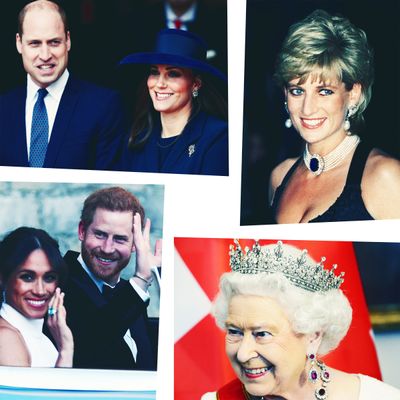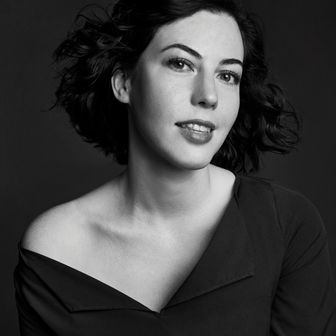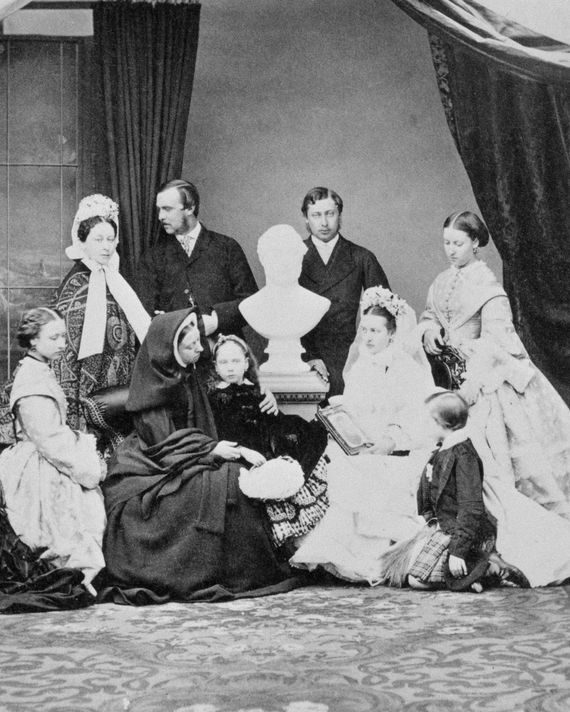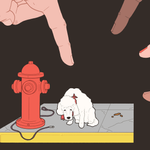
In early December, after weeks of nonstop rumors about drama and infighting between members of the British royal family — that Meghan Markle was too “demanding,” and that Princes Harry and William were on tense terms — Kensington Palace finally broke its silence. In response to a report claiming Meghan and Kate Middleton had exchanged harsh words, it issued a terse three-word denial: “This never happened.”
Taken by itself, in any other circumstances, the statement would probably not be considered substantial — but those who follow royal news knew what a big deal it was. The press offices of the British royal family rarely comment on the record about anything, so it seemed that the palace had been pushed to a breaking point.
“Where the palace has perhaps added fuel to the flame on this is that they didn’t immediately come out and say, No, Meghan didn’t make Kate cry,” Duncan Larcombe, former royal editor of the Sun, told the Cut. “The denials have been very, very labored, and that’s quite interesting.”
There aren’t any equivalents to the British royals in the U.S.; for journalists, covering them is unlike reporting on celebrities or political figures, as they’re each born (or married) into lifelong positions of power. Larcombe told the Cut that in a sense, it’s almost like the White House press corps, in that there are reporters and correspondents who travel with the royal family and cover their public engagements and projects. Just as White House correspondents speak with sources around the president to find out what’s going on behind the scenes — from grumblings about the president’s behavior to upcoming personnel changes — royal reporters largely do the same. That’s often how royal gossip makes it out of the palace.
For example, in the case of recent reports of Meghan’s “west coast” work ethic — she apparently wakes up at 5 a.m. and sends several work-related texts each day, the horror — Larcombe says that it’s unclear who said it, but in his estimation, the stories are likely coming from people working in or around the palace. He explained, “There clearly have been some relatively disgruntled members of staff within palace circles that have leaked gossip — which is what it is: gossip.”
But how does this gossip even reach the tabloids? Majesty Magazine editor Ingrid Seward, the author of My Husband and I: The Inside Story of a Royal Marriage, told the Cut that, in some instances, reporters will hear stories from those who live and work around the royals, but may decide not to publish them right away, either to protect their source or because the story wasn’t deemed relevant at the time. In the case of the alleged “tension” between Prince William and Prince Harry that’s now dominating British tabloids, Seward said, “I heard that story nearly a year ago. What these reporters do is they hear a lot of these stories but they don’t necessarily write them until they feel the moment is right.”
Other times, according to Elaine Lui of LaineyGossip, the stories are “definitely fabricated” to sell papers (and at times offensive, like some of the racist coverage Meghan Markle has received from the British tabloids). With stories that are true, or at least based in fact, you can almost trace the source of the gossip — if you know where to look.
“If a royal biography on Prince Charles is published, with a lot of the information on there, the person who wrote the book would have been given access to travel with Prince Charles and his aides and courtiers to gather information and to get quotes,” Lui, who also co-hosts The Social talk show and reports for eTalk in Canada, told the Cut. “The people who work in the communications offices of the court are not strangers to working with the press, giving them leads to certain stories, and passing on information — just as it was in the seasons of the Crown that we’ve seen before.”
This isn’t a new game; reporting on royal gossip has been happening for a while, though it’s certainly evolved under different monarchs’ reigns. “It’s varied over time, as there’s a balance between maintaining the mystique of the monarchy and ensuring members of the royal family have a private life to some degree, but also responding to a very strong public interest in royalty and life behind palace doors that has existed for centuries,” royal historian Carolyn Harris, the author of Raising Royalty: 1,000 Years of Royal Parenting, told the Cut.
During the reign of King George III, who ruled until 1820, his sons were known for “their rather scandalous lives” — and in response, the royal family began to publish their public engagements in the Court Circular. Later, gossip surrounding King George IV’s attempt to divorce his wife, Caroline, made the newspapers. “It was one of the first royal stories that received what we might see as the tabloid treatment, as people sided with the queen and thought she was badly mistreated by her husband,” Harris said.
Years later, Queen Victoria and Prince Albert sought to make the monarchy “respectable” again, according to Harris. They opted to do so by building a public image that not only centered on their roles as royals, but also of them as husband and wife, and parents to nine children (in a stark contrast to King George IV and Caroline’s marital woes). They did this through the press and with photography as it became more widely available — and after Albert’s death, newly developed newsreel also helped the queen get her narrative across. “It is known that Queen Victoria did follow the coverage she received in the press and would sometimes even comment on how she was being spoken of,” explained Harris, “whereas Queen Elizabeth II would never comment on press coverage of the monarchy in quite the same way.”
The reign of Queen Elizabeth II has seen more press coverage than any previous monarch — which makes sense, given the technological advancements around journalism. But it wasn’t until Princess Diana burst onto the scene that we really saw a member of the royal family show an uncanny ability to work the media to her advantage. “One time, we were at an event at 10 Downing Street, and I will always remember her walking into that room of editors and just feeling diminished by her. She was so beautiful and so tall, she just towered over everybody,” Cathy Horyn, who wrote the Vanity Fair cover story on Diana that came out one month before her death, told the Cut (where, full disclosure, she serves as fashion critic-at-large). “I was watching her, and she was just charming everybody — big smile and gracious.”
Though Princess Diana wasn’t exactly media-savvy when she married into the British royal family at age 20, she grew to understand the press, what it was asking of her, and how to use it to her benefit. As troubles in her marriage dominated headlines — with rumors of strife and infidelities on both sides, including Prince Charles’s ongoing relationship with Camilla Parker Bowles — Diana secretly assisted royal reporter Andrew Morton in his 1992 biography of her to shape the narrative. She later sat down for a now-iconic TV interview with the BBC’s Martin Bashir, during which she memorably said, “Well, there were three of us in this marriage.” Diana also took lunches with editors and befriended various members of the media.
“She was so popular and so beautiful, and people were already sympathetic,” Horyn said. “Did she have to really make such a play for the press? Maybe she realized, Yes, I really do have to, otherwise terrible things will be written about me. She was almost covering her bases in a way.”
Nowadays, there are still instances in which royals grant interviews to the press, but those remain few and far between. A recent example would be the November Vanity Fair cover story on Prince Charles, or the BBC interview Meghan and Prince Harry gave after their engagement announcement. Otherwise, royal reporters can seek out statements from Buckingham Palace, Clarence House, or Kensington Palace press offices, but if the report is about the royals’ personal lives, Larcombe says reporters are unlikely to get an on-the-record reply. That’s why, for instance, Kensington Palace’s recent three-word official denial — “This never happened” — was so noteworthy.
But despite the (brief) denial, a report recently emerged that Meghan is frustrated that she isn’t supposed to publicly respond to the numerous rumors about her that continue to circulate. A “source” told Us Weekly, “She’s always relied on her own voice to stand up for others, and for herself. So not being able to say anything is a debilitating feeling.” Likewise, Larcombe told the Cut that the palace should make more of an effort to diffuse the situation. “Meghan is a modern royal in a modern era, and that’s why it’s so important that the palace press office get some kind of grip on the situation,” Larcombe said. “If any of these stories that have emerged about her are not true, they need to say that. They can’t bury their heads in the sand anymore.”









